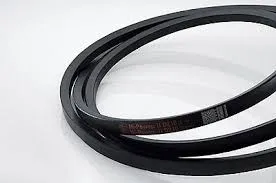- Arabic
- French
- Russian
- Spanish
- Portuguese
- Turkish
- Armenian
- English
- Albanian
- Amharic
- Azerbaijani
- Basque
- Belarusian
- Bengali
- Bosnian
- Bulgarian
- Catalan
- Cebuano
- Corsican
- Croatian
- Czech
- Danish
- Dutch
- Afrikaans
- Esperanto
- Estonian
- Finnish
- Frisian
- Galician
- Georgian
- German
- Greek
- Gujarati
- Haitian Creole
- hausa
- hawaiian
- Hebrew
- Hindi
- Miao
- Hungarian
- Icelandic
- igbo
- Indonesian
- irish
- Italian
- Japanese
- Javanese
- Kannada
- kazakh
- Khmer
- Rwandese
- Korean
- Kurdish
- Kyrgyz
- Lao
- Latin
- Latvian
- Lithuanian
- Luxembourgish
- Macedonian
- Malgashi
- Malay
- Malayalam
- Maltese
- Maori
- Marathi
- Mongolian
- Myanmar
- Nepali
- Norwegian
- Norwegian
- Occitan
- Pashto
- Persian
- Polish
- Punjabi
- Romanian
- Samoan
- Scottish Gaelic
- Serbian
- Sesotho
- Shona
- Sindhi
- Sinhala
- Slovak
- Slovenian
- Somali
- Sundanese
- Swahili
- Swedish
- Tagalog
- Tajik
- Tamil
- Tatar
- Telugu
- Thai
- Turkmen
- Ukrainian
- Urdu
- Uighur
- Uzbek
- Vietnamese
- Welsh
- Bantu
- Yiddish
- Yoruba
- Zulu
Oct . 13, 2024 07:24 Back to list
gt2 timing belt
Understanding the GT2 Timing Belt An Essential Component in Mechanical Systems
In the world of mechanical engineering and robotics, the GT2 timing belt is a crucial component that plays a significant role in the efficiency and functionality of various systems. This toothed belt is widely used in 3D printers, CNC machines, and other precision equipment due to its reliability and performance. This article provides an overview of what GT2 timing belts are, their advantages, applications, and maintenance.
What is a GT2 Timing Belt?
The GT2 timing belt is a synchronous belt made from reinforced rubber, featuring specific tooth profiles that interact with matching pulleys. The GT stands for Gates Timing, a nod to the original manufacturer, which played a pivotal role in the development of this design. The 2 indicates the pitch of the belt, which measures 2 millimeters between the centers of adjacent teeth. This pitch helps ensure that the belt maintains precise timing and prevents slippage, making it ideal for applications requiring accurate movement.
Advantages of GT2 Timing Belts
1. High Precision One of the key advantages of GT2 timing belts is their ability to provide high precision in motion transfer. The evenly spaced teeth ensure a direct engagement with the pulleys, allowing for accurate positioning of components.
2. Low Stretch GT2 belts exhibit minimal stretch over time, which means they maintain their performance and accuracy. This characteristic is crucial in applications where consistent performance is required, such as in printing or machining tasks.
3. Low Noise Operation Unlike traditional V-belts, GT2 timing belts operate quietly. This feature is particularly beneficial in environments where noise reduction is vital, such as educational settings or home offices.
4. Versatile Applications The GT2 timing belt is versatile enough to be employed in various fields, including robotics, automotive systems, and conveyor systems. Its adaptability makes it a popular choice among engineers and designers.
5. Cost-effective Compared to other drive systems like gears, timing belts are often more affordable, making them an attractive option for many projects without compromising quality.
Applications of GT2 Timing Belts
Due to their unique properties, GT2 timing belts find utility in numerous applications. Some of the most common include
gt2 timing belt

- 3D Printers GT2 belts are a staple in 3D printers as they enable precise control of the print head's movement, ensuring accurate layer deposition.
- CNC Machines Computer Numerical Control (CNC) machines utilize GT2 timing belts for precise positioning of cutting tools, contributing to the accuracy required in manufacturing.
- Robotics In robotics, GT2 belts help facilitate smooth and controlled movements, which are essential for tasks ranging from simple gestures to complex maneuvers.
- Conveyor Systems These belts are also used in various conveyor systems to transport goods efficiently, maintaining a continuous and synchronized motion.
Maintenance of GT2 Timing Belts
To ensure the longevity and performance of GT2 timing belts, regular maintenance is essential. Here are some tips for maintaining these belts
1. Inspection Regularly check the belt for signs of wear or damage, such as fraying or cracking. Early detection can prevent premature failure.
2. Tensioning Ensure the tension of the belt is correctly adjusted. A too-tight or too-loose belt can lead to inefficiency and potential failure.
3. Cleaning Keep the belt clean and free from debris. Accumulated dirt can cause premature wear and may affect the belt's performance.
4. Replacement If the belt shows significant signs of wear or damage, it should be replaced immediately to avoid operational disruptions.
Conclusion
The GT2 timing belt is a crucial component across various industries, providing precision, reliability, and versatility. Understanding its advantages, applications, and maintenance practices can significantly benefit engineers and designers in selecting the right components for their projects. As technology advances and the demand for precision continues to grow, the GT2 timing belt will remain an essential element in the mechanics of the future.
-
Upgrade Power Steering Pump Belt for Smooth, Quiet Operation
NewsAug.27,2025
-
Precision Timing Belt & Chain: Engine Performance & Durability
NewsAug.26,2025
-
Precision Lathe Drive Belts: Durable & Reliable Performance
NewsAug.25,2025
-
84.5 Serpentine Belt: Durable & Precision Fit for Your Engine
NewsAug.24,2025
-
Premium Ribbed Drive Belts for Quiet Power Transmission
NewsAug.23,2025
-
High-Performance Vehicle Timing Belt for Engine Precision
NewsAug.22,2025

